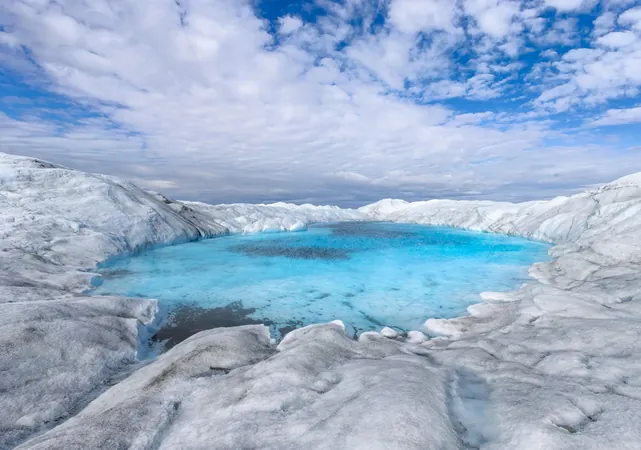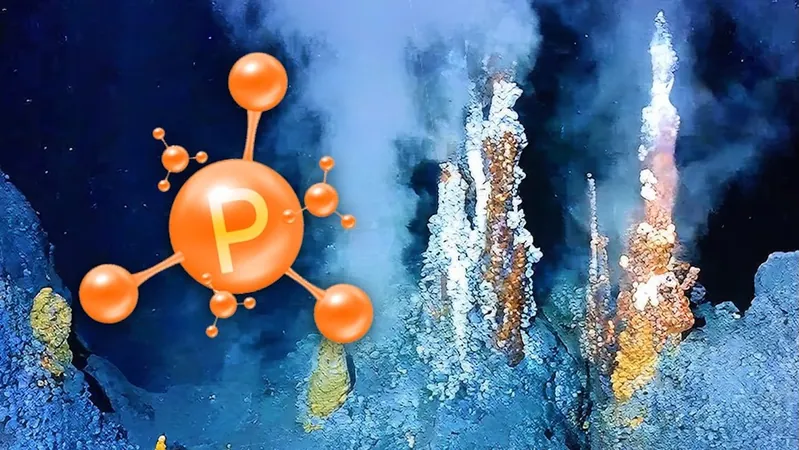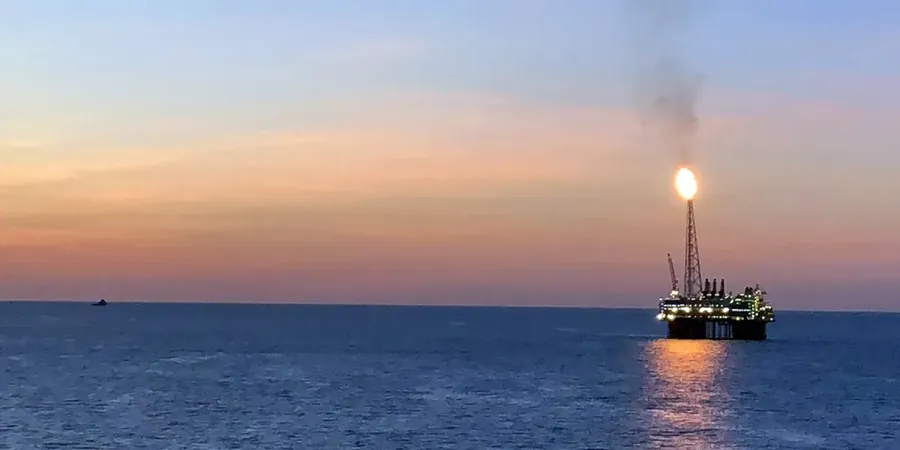
Shocking Transformation: Thousands of Greenland's Lakes Now Emit Carbon!
2025-01-22
Author: Rajesh
Shocking Transformation: Thousands of Greenland's Lakes Now Emit Carbon!
In a startling revelation, researchers have discovered that thousands of lakes in West Greenland have undergone a dramatic shift due to extreme weather conditions. Known for their stunning blue waters that provide drinking water and play a vital role in sequestering atmospheric carbon, approximately 7,500 of these lakes have recently turned brown, raised health concerns, and begun releasing carbon back into the atmosphere.
This concerning change, detailed in a groundbreaking study published in the Proceedings of the National Academy of Sciences (PNAS), highlights how unprecedented climate events can push vulnerable Arctic ecosystems past critical tipping points.
Record Heat and Rainfall Trigger Rapid Changes
Conducted by a team led by esteemed Fulbright Distinguished Arctic Scholar Jasmine Saros from the University of Maine Climate Change Institute, the research revealed that within less than a year after extreme fall weather in 2022, the physical, chemical, and biological properties of the lakes had transformed drastically—changes that would typically occur over centuries.
"The magnitude of this and the rate of change were unprecedented," noted Saros, who is also a professor specializing in paleolimnology and lake ecology.
The Role of Climate Extremes
Normally, Greenland experiences snowfall in autumn, but record-high temperatures shifted this precipitation to rain, resulting in the thawing of permafrost—soil that is usually frozen and rich in organic carbon. As rainwater permeated the thawing ground, it leached carbon, iron, and other nutrients into the lakes, drastically affecting their composition.
The influx of dissolved organic carbon and essential nutrients has led to rampant bacterial growth, altering the lakes' smell and taste, and raising alarms over their safety for drinking due to higher levels of metals. "The increased dissolved organic material can interact with drinking water treatment processes to produce chlorination byproducts, which may be carcinogenic," Saros explained.
The impacts of this transformation are profound, not only influencing water quality but also affecting the local communities that depend on these lakes for sustenance.
Ecosystems at Risk: From Carbon Sinks to Carbon Sources
As these lakes have turned brown, the reduction in water transparency has significantly diminished light penetration, disrupting plankton dynamics. This lack of light inhibits phytoplankton, which are vital for absorbing carbon dioxide, while organisms that decompose organic matter proliferate, tilting the ecological balance.
These lakes have now switched roles, changing from carbon sinks to significant emitters of carbon dioxide—a staggering 350% increase in emissions. "Because the lakes turned so brown, the reduction in light favors organisms that rely on organic carbon pathways instead of photosynthesis," Saros added, a shift that carries alarming implications for both the Arctic carbon budget and regional biodiversity.
Atmospheric Rivers: The Culprits Behind the Catastrophe
Researchers identified atmospheric rivers—narrow corridors of concentrated moisture in the atmosphere—as the main drivers of the abnormal weather patterns that led to this transformation. The National Oceanic and Atmospheric Administration (NOAA) warns that these atmospheric rivers are expected to become more frequent and intense as climate change accelerates, raising concerns for similar disasters in the future.
What Lies Ahead for Greenland's Lakes?
The critical question arises: Can these lakes return to their pristine blue state, or is this change permanent? "It was such an overwhelming climate force that drove all the lakes to respond in a similar manner," Saros pondered, underscoring the uncertainty surrounding potential recovery.
Ongoing research and monitoring will be vital in assessing the long-term impacts and recovery trajectories of these lakes. The team utilized years of data collection and remote sensing technology to capture the rapid changes resulting from these extreme climate events.
A Call for Comprehensive Research on the Arctic Ecosystems
This extensive study has been a collaborative effort involving researchers from UMaine, NOAA, and various international institutions, enabling crucial insights into how extreme weather can reshape lake ecosystems and carbon dynamics.
As atmospheric rivers become increasingly common, understanding their effects on Arctic lakes is essential for developing strategies to combat climate change's impacts. Continued investigation into these ecosystems and their resilience against climate extremes will be critical as scientists strive to field potential mitigative measures for affected regions.
With the implications of these findings echoing beyond Arctic waters, attention must be paid to the alarming changes unfolding in Greenland’s lakes. Stay informed and subscribe for the latest updates on climate change and its far-reaching consequences!


 Brasil (PT)
Brasil (PT)
 Canada (EN)
Canada (EN)
 Chile (ES)
Chile (ES)
 Česko (CS)
Česko (CS)
 대한민국 (KO)
대한민국 (KO)
 España (ES)
España (ES)
 France (FR)
France (FR)
 Hong Kong (EN)
Hong Kong (EN)
 Italia (IT)
Italia (IT)
 日本 (JA)
日本 (JA)
 Magyarország (HU)
Magyarország (HU)
 Norge (NO)
Norge (NO)
 Polska (PL)
Polska (PL)
 Schweiz (DE)
Schweiz (DE)
 Singapore (EN)
Singapore (EN)
 Sverige (SV)
Sverige (SV)
 Suomi (FI)
Suomi (FI)
 Türkiye (TR)
Türkiye (TR)
 الإمارات العربية المتحدة (AR)
الإمارات العربية المتحدة (AR)